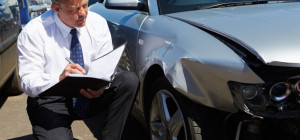If you have an automobile that is reaching the age of five years of more you could be paying more for car insurance rates than you need too. If you consider dropping two optional and related types of coverage such as collision or comprehensive you could save a lot of money.
Bank Owned and Older Vehicles
Your insurance cost will go down drastically during the remaining years of your cars life. Assuming if you do not have a loan on the car you can drop both types of insurance otherwise the bank may require you to keep full coverage until the car loan is paid in full.
Insurance costs can be reduced dramatically particularly for older cars where what you pay in premiums may not sum up to whatever you would probably collect if you file an insurance claim.
sum up to whatever you would probably collect if you file an insurance claim.
Collision and Comprehensive whats the difference?
Collision insurance covers most kinds of issues with your vehicle that are the results of crashing into something such as another car, the curb, a store, or maybe even a light post.
It generally carries a deductible of between $250 and $1,000. Comprehensive insurance typically covers every other damages to your vehicle that doesn’t fall under collision insurance. For that reason comprehensive is frequently called other than collision. A good way to think of the difference is collision is something you damaged and comprehensive is damage from others. For example, damage from wind, hail, fire and people all falls into the comprehensive umbrella.
Both together, collision and comprehensive, along with liability is typically called full coverage.
Comprehensive coverage protects you from misfortunes starting from a damaged window to people “keying” your vehicle, or small scratches caused by a key. Comprehensive generally have a deductible between $100 and $300.
Considering your option to drop insurance
If you have a car you may ask yourself if you should drop comprehensive or collision or both? Before dropping collision and comprehensive, give the choice some careful thought claims. Dropping collision and comprehensive is an error unless you are comfortable soaking up the fiscal impact of replacing the vehicle if it is stolen or damaged. Ask yourself, “could you replace the vehicle if it is non-operational after an accident today?”
Whether or not you decide that it is sensible to drop collision and comprehensive you can struggle to do so if you happen to have a vehicle loan. Most lease firms and lien holders will need these coverages.
On the other hand, if your car is paid off and is so old the price has hit an all-time low you might find that annual premiums to carry collision and comprehensive are too high. The cost would not match against the possible benefits of having a claim covered.
A formula to help make your decision
How does one know when you have reached that point? According to top car insurance companies a vehicle owner should think about dropping collision and comprehensive coverage when your car is worth less than ten times the amount you spend on your premium. For example, if you annual premium is $650 and your car is worth $5000 then it may be time to drop the two types of coverage.
- Make sure to look at the price of your yearly collision and comprehensive premium. Make sure not to include liability. Then compare that number to the value of your automobile minus your deductible.
- If the first number is bigger than the second number that could be the decisive factor to drop both coverages. You might find that your automobile holds enough price to make dropping collision and comprehensive a hard decision.
- If that is the case then you may want to ask yourself some questions such as “do you live in an area subject to hail, or a rustic area where collisions with animal life regularly happen?” “Is your area a high-crime area where car continually are stolen?”
- If that is the case collision and comprehensive may offer higher value to you than to drivers who don’t live in areas where such risks are as great. Consider what the two coverages pays for and if you can afford the bill before you drop coverage.
- The deductible alternative is if dropping coverage altogether appears too risky consider raising your deductible as an alternative.
Remember auto insurance is an expense as long as you own a vehicle
That way you will get some of the savings of dropping coverage without really having to sacrifice the insurance protection. This is the typical trend now. Drivers are opting to raise their deductible rather than drop collision and comprehensive particularly in high-crime areas.
Raising a deductible from $250 to $500 could drop your coverage costs by ten to twenty percent. And raising a $250 deductible to $1,000 could save costs of over forty percent.
If your vehicle falls into the category to drop collision and comprehensive coverage then the circumstance would be a cost effective decision. If not, consider raising your deductible. Either way if you do either make sure you have a little money set aside for a one of those unforeseen days.







